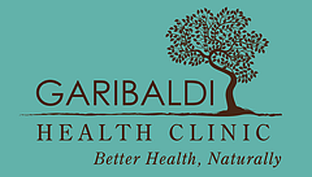The Sunshine Vitamin: D
At this time of year, with the sun dipping lower on the southern horizon, many of us feel the loom of dark days and winter illness ahead. This is a natural emotional response to failing light, and perhaps even an ancient echo from times of real deprivation for long-forgotten ancestors.
But there are also purely physical effects of dwindling sunlight. One of the most essential vitamins, a family of steroid hormones that we call vitamin D, is manufactured in the human skin through interaction with ultraviolet rays (UV). When the sun heads south, so does much of our primary natural source of the vitamin.
We can, of course, get a great deal of vitamin D from dietary sources such as egg yolk, butter, liver, fish oils and dark leafy green vegetables. But many people don’t make healthy choices about what they eat, and they may have to resort to a supplement to keep up their vitamin D in the winter months.
Maintaining an adequate level of vitamin D is vital because without it, our bodies cannot take up enough calcium for healthy development of bones and teeth, especially in children. Older people become subject to loss of bone density (osteoporosis), and increased risk of fractures.
Children who are deficient in vitamin D can develop rickets, a crippling disease that may soften the skull, bow the legs, cause curvature of the spine and large knobby joints. Although it was known at least 300 years ago that cod liver oil and exposure to sunlight could cure the disease, the role of vitamin D was not understood until the 1920s, and only then were remedies widely adopted.
While rickets is now rare in western countries, it remains widespread – ironically – in some of the sunniest lands on earth. Women may go for years without exposure to sunlight, forbidden to venture outdoors in public unless draped from head to toe and heavily veiled. Children, always the most vulnerable to rickets, may have no source of vitamin D in their diet. And skin colour is also a factor. Darkly pigmented skin absorbs less UV and produces correspondingly less vitamin D.
A similar effect occurs in fair-skinned people who use sun block creams. A SPF rating of more than 8 will stop all vitamin D production in the skin. But this needs not to be a trade-off between vitamin D and skin cancer; even 15 minutes of sun a day will produce significant amounts of vitamin D. And the body can store it, by the way, as a hedge against the dark winter months.
If there’s one thing worse than too little vitamin D, it’s too much. Over-dosing – which comes only from supplements, not excessive exposure to sunlight – can be severely toxic. (Baits laced with vitamin D are used as rat poison.)
Because it is fat-soluble, not water-soluble like a number of other vitamins, vitamin D is not eliminated from the body in urine. If allowed to accumulate to dangerous levels, it can cause the growth of kidney stones and injurious calcification of internal organs.
To reach these levels, however, you would have to take hundreds of times the normal dose. If you are in doubt about what that should be for your age and sex, consult your health practitioner.
Meantime, bear in mind that vitamin D may prove to be even more important than we realize. Although we don’t yet know why, most of the cells in our body have receptors for the vitamin, making this a hot subject of current research.
©Dr.Ashely Gordon, 2005.

